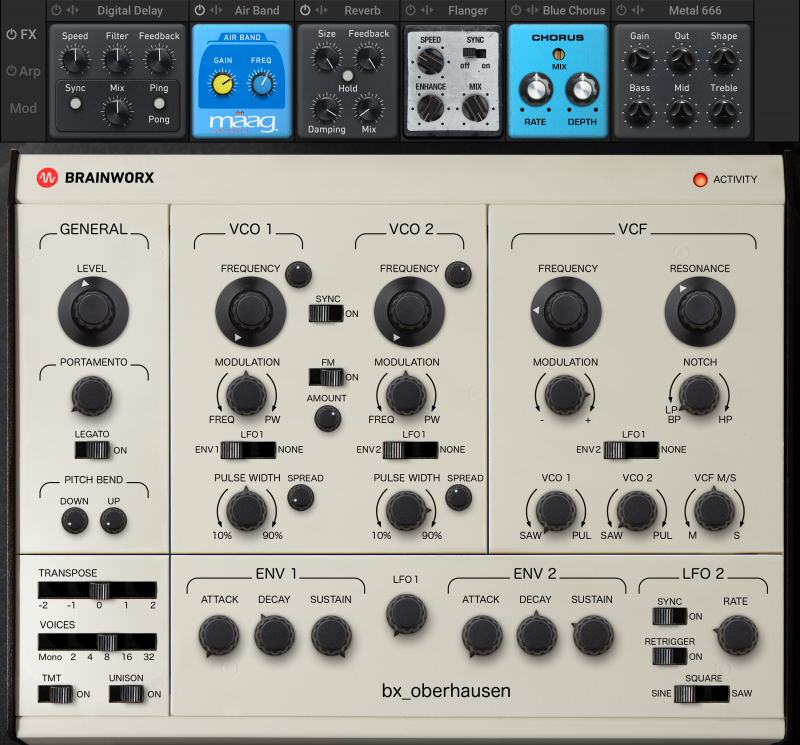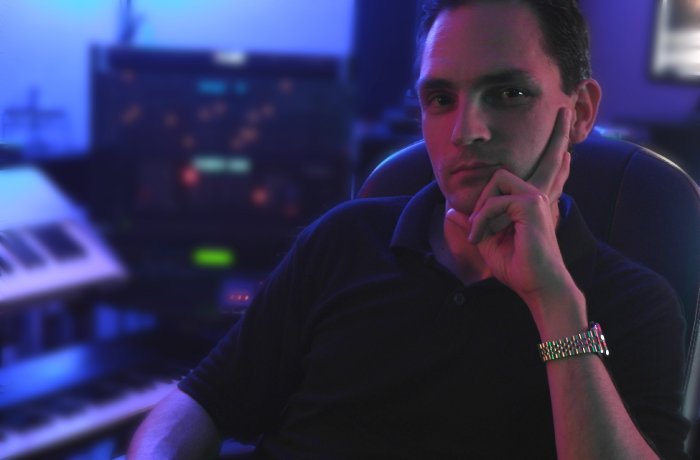Brainworx releases Oberheim synth emulation plugin, bx_oberhausen;
Brainworx plugins have long enjoyed an excellent reputation in the audio community. Their focus has been unique plugins, plugin versions of boutique hardware and officially endorsed emulations of classic hardware recording studio processors. They put sonic quality as top priority, and have introduced features such as emulating the random quality changes of analogue circuitries and their trademark mid-side processing in a range of plugins. What sets Brainworx apart from the average plugin design firms is the pursuit of perfection in emulating analog characteristics in plugin forms, as well as introducing unique plugins that give extended functionalities to standard processes (such as their PanEQ, which allows the stereo panning of different frequency ranges of audio).

While being a well-established and popular brand used by the top producers and studios around the world, they haven’t yet created a virtual instrument – until now! Brainworx Oberhausen, the first virtual instrument from the German company is an Oberheim SEM emulation in a plug-in form that sets new standards in its category. Not only it replicates the sound (both oscillators and filter character), modulation action, functionality, design of the classic analog synthesizer, it adds modern features that users have come to expect from Brainworx.
Julius Dobos, composer, sound synthesist and Distinguished Professor at University of Silicon Valley was beta-testing bx_oberhausen and designing some of its preset patches for Brainworx during the past few months. We asked Julius, who teaches the Ultimate Electronic Music Production course, among other music production classes at Usv, about his process and first-hand experience with bx_oberhausen.

What is unique about this new plugin?
The classic Oberheim sound is one of my favorites to build textures from in electronic music. I have used many of Tom Oberheim’s models and own several original Oberheim synthesizers. The Oberheim sound is hard to get right with a digital emulation, it takes a lot beyond just sampling notes to bring its character to life in the computer. There is more to it than just the recreation of the sound; the real character is in the smooth (12db/oct) filter, the way the modulation drives the filter and the modulation sources interact, and some sort of magic that’s part of playing an Oberheim synth – a sonic feel that has not been properly replicated in a plugin form yet. So trying to get closer to that feel in the box is a unique endeavor on its own.
At the same time, as plugins do these days, bx_oberhausen comes with digital conveniences: categorized presets, being able to save your own sounds, flexible modulation matrix, a cool arpeggiator and some other extended features. The most unique feature is a full effect rack inside of the synth plugin; this allows the user to incorporate audio processing like phasing, delay, compression, eq, distortion, etc. into the musical sound design process. Of course, you’re not limited to the 2 or 4 polyphony of the classic hardware either…
How did you get into the position of creating preset sounds for electronic instrument companies?
I have been designing sounds for synths since the mid-90’s; that’s when I worked for Roland in Europe and was beta-testing and composing demo tracks for their new synths. Since then, I have enjoyed test-driving new gear, designing factory preset patches and composing sample music for plugin releases of various companies. I suppose twenty-five years ago it was mainly my passion, these days it’s my continued interest and experience in electronic music production that lead to these fun assignments.
How do you go through the sound design process itself?
When I’m asked to design sounds or compose sample music for a new synth, I try to use its unique features or most characteristic elements. It would be kind of uninteresting to re-create the classic analog synth sounds, they are already everywhere; I prefer to construct something fun or unusual but still useful for music production. First, I decide on the sound category I want to make a patch for, for example, a pad. Then I start playing around with the main parameters to make something simple that I enjoy playing. Next, I focus on adding the unique features and sonic character, add extra modulation and set up real-time performance control parameters. The last phase is testing: I start improvising with the new sound. It has to feel inspiring and musical, i.e. useful for creating and performing music, yet, offer something unexpected, unique and emotionally captivating.
Can USV music production students try out the new Brainworx plugin?
Absolutely. The College strives to bring the latest to our students, in this case, it’s the most current out there. Students can listen to the new synth in Studio CS (on the USV campus), while we’re waiting for the delivery of an Arturia MicroFreak and some other fun new toys.
You can hear Julius’ Oberhausen presets in this short, exclusive sample he created to demonstrate them, and read more about the differences between tools used in electronic music today in his articles on analog vs digital synths and the state of plugins, modular synths and noise machines. You can learn more about (and try for free) bx_oberhausen at the Brainworx website, and even download some freebie plugins!


